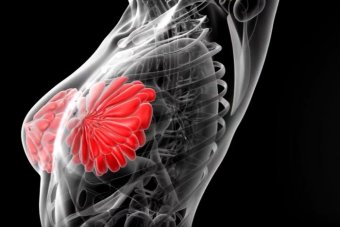A pilot study into breast density among young women is being launched by West Australian researchers in the hope of reducing cancer risk later in life.
Increased breast density is one of the strongest predictors of breast cancer risk in older women, however not much is known about it in younger populations.
A team at the University of Western Australia (UWA) is now seeking hundreds of women aged between 18 and 40 to participate in the study.
UWA senior research fellow Jennifer Stone said researchers wanted to identify factors associated with increased breast density in young women.
“Women [aged over 40] with extensive breast density for their age are four to six more times more likely to develop breast cancer than women of the same age but with very little or no mammographic density,” she said.
“The idea is that if you change your breast density then you can potentially change your breast cancer risk.
“Factors like modifiable behaviours such as smoking, alcohol use, contraceptives, all those things we know that are potential risk factors for breast cancer that could also potentially change breast density.”
Dr Stone said identifying factors linked to breast density could help inform primary prevention strategies against cancer and assist in early detection.
Women to be measured using new device
The study’s purpose is two-fold, as participants will be measured using a new device developed in Canada called Transillumination Breast Spectroscopy, or TiBS.
While a woman’s breast density is typically measured via a mammogram, it is not recommended for those under the age of 40, as they have a low risk of developing breast cancer and would therefore be unnecessarily subjected to low doses of radiation.
By contrast, TiBS does not involve radiation and instead measures breast tissue composition using visible and near-infrared light.
“It’s very quick, it’s easy, it’s portable, it’s affordable,” Dr Stone said.
“So [it’s] something that could be used to monitor breast density in younger populations to monitor change and use it as a biomarker.”
Study participants will be asked about their experience with TiBS to help determine whether the method is acceptable and feasible among young women.
Researchers said it could lead to a larger study in the future to help understand how breast density changes over time and how it relates to the risk of cancer later in life.
Dr Stone emphasised that dense breasts were quite common and, while they were a risk factor for cancer, they alone did not indicate a woman would develop the disease.
The study has been funded by the National Breast Cancer Foundation.
